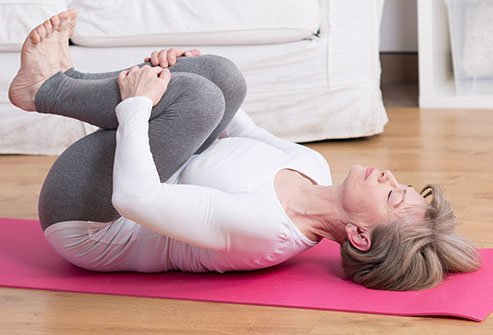What are the Best Stretches for Back Pain Relief at Home?
How common is back pain?

Back pain is a common ailment, affecting 8 out of 10 people at some point in their lives. Back pain can be acute, coming on suddenly and lasting from a few days to a few weeks, or chronic, lasting for more than three months. It may be sharp and sudden or dull and achy. Most back pain will go away on its own with home care.
If your back pain is severe or occurs after an injury, you should see your doctor. The best treatment for lower back pain will depend on the type of pain as well as the cause. Stretching can help relieve back pain and prevent it in the future.
What is back pain?
Most back pain occurs in the lower back. The lower back is made up of five vertebrae and supports much of the weight of the upper body. There are discs between the vertebrae that act as shock absorbers and help cushion the bones as the body moves.
Additionally, there are ligaments that hold the vertebrae in place, tendons that attach the muscles to the spinal cord, and nerves attached to the spinal cord. A problem in any of these structures can cause back pain.
Back pain can be the result of many things including:
- A fall
- An injury
- Lifting something heavy
- An accident
- A medical condition
- Changes in your spine as you age
- Degenerative problems such as arthritis
- Nerve and spinal cord problems
- Kidney stones
- Fibromyalgia
Several factors may increase your risk of developing back pain including:
- Being older
- Not being physically fit
- Weight gain
- Some genetic conditions, such as ankylosing spondylitis
- Jobs that require heavy lifting, twisting, or repetitive movements
- Stress
- Smoking
- Backpacks that are too heavy
Diagnosis of back pain
Your doctor will discuss your symptoms with you and do a physical exam. That may be enough to diagnose the problem causing your back pain. Your doctor may order some of the following tests or imaging studies:
- X-ray
- Computerized tomography (CT) scan
- Magnetic resonance imaging (MRI)
- Nerve conduction studies
- Electromyography (EMG)
- Bone scans
- Blood tests to check for other causes of back pain
- Discography
Treatments for back pain
Acute back pain usually gets better on its own and is treated with the following measures:
Medications
- Medications to relieve pain such as acetaminophen and aspirin, though aspirin should not be given to children or teenagers
- Nonsteroidal anti-inflammatory drugs (NSAIDs) such as ibuprofen and naproxen
- Muscle relaxants prescribed by your doctor
- Topical pain relievers applied to the skin such as capsaicin and lidocaine
Heat and/or ice
A combination of heat and ice may help with inflammation and mobility.
Stretching
Gentle stretching can help relieve back pain and prevent future back pain. Still, make sure you talk to your doctor before you undertake an exercise program. Some good stretches for relieving back pain are:
- Knee to chest stretch: Lie flat on your back with your toes pointed up. Bend one knee and pull your leg to your chest. Wrap your arm around your knee and pull it towards your chest. Hold this position for 20 seconds. Slowly lower your leg back down. Repeat with the other leg.
- Lying knee twist: Lie on your back with your legs straight. Bend your right knee and cross it over to the right side of your body. Hold it in a position where you feel a gentle stretch in your back and buttocks for 20 seconds. Tighten your abdomen and bring your leg back to the center. Repeat on the other side.
- Cat/cow stretch: Get on your hands and knees. When you inhale, round your back like a cat and tighten your abdominal muscles. When you exhale, arch your back. Alternate these two movements slowly.
- Cobra stretch: Lie on your stomach with your legs extended. Place your hands on either side of your head with your forearms on the floor. Slowly push your body up until your weight is on your forearms. When you feel a gentle stretch, hold for 10 seconds. Slowly lower your body back down.
- Child's pose: Get on your hands and knees with your knees a little wider than hip-distance apart. Slide your toes together until they touch. Push your hips backward to bend your knees. When you are in a comfortable seated position, extend your arms, and gently rest your head in a comfortable position. Hold for 20 seconds. Gently return to your hands and knees.
Chronic back pain is treated with a step-up approach starting with simple non-invasive treatments and working up to more aggressive treatments. If other treatments are not effective, surgery may be necessary.
Possible complications or side effects
Medicines used to treat back pain can have some side effects, including:
Nonsteroidal antiinflammatory drugs
- Indigestion
- Stomach ulcers
- Allergic reaction
- Headache
- In rare cases, liver, kidney, or heart problems
Acetaminophen rarely causes side effects, but it can cause liver damage if you take too much or take it with alcohol.
Muscle relaxants
- Drowsiness
- Constipation
- Confusion
- Dizziness

